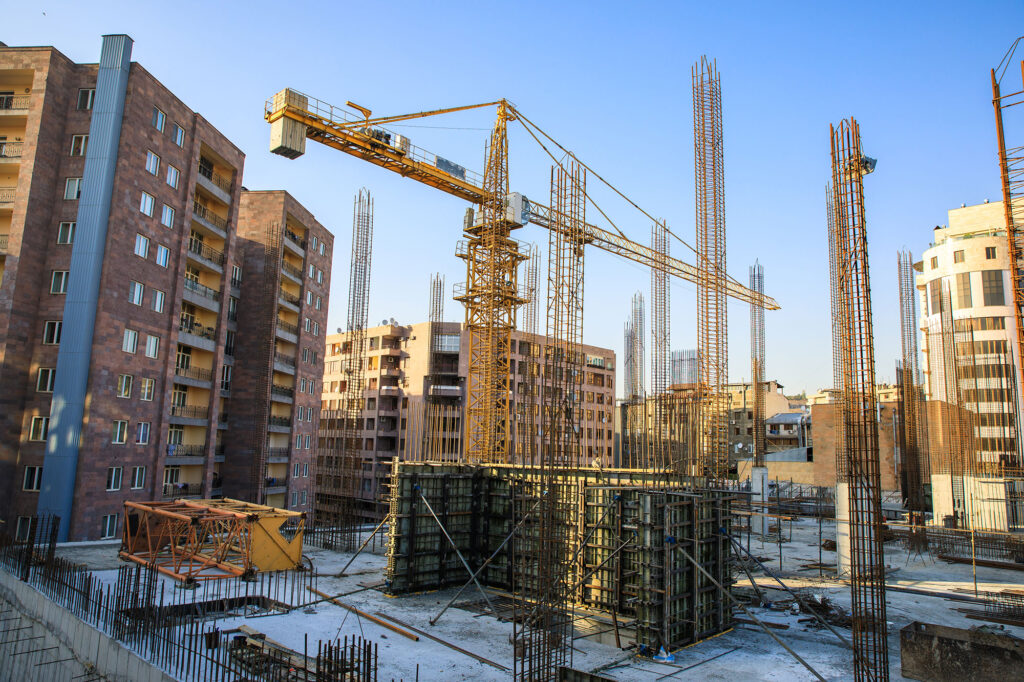- (866) 243-7227
- info@caconsultants.tech
- License # 904491
KNOWLEDGEBASE OF TERMS AND CODES
Basis of Design
Building envelope systems identified in a non-proprietary performance criteria outline with proprietary options. Includes warranty recommendations.
Building code (construction)
A set of regulations established by a governmental body to ensure the safety, health, and welfare of building occupants. These codes typically address the minimum requirements for structural integrity, fire safety, accessibility, energy efficiency, and other aspects of construction.
Building envelope
The physical barrier separating the conditioned interior environment from the unconditioned exterior environment. It includes walls, roof, foundation, windows, doors, and any penetrations through them.
Control layers
Elements within the building envelope that manage factors like air, water, heat, and sound. Examples include insulation, vapor barriers, and air barriers.
Division 7
A type of construction encompassing building envelope waterproofing, thermal, and moisture protection.
Fenestration
Openings in a building envelope, like windows, doors, and skylights, that allow for natural light, ventilation, and views.
Forensic Testing
The meticulous examination and analysis of a building’s control layer components — such as roofs, walls, windows, doors, decks, below-grade, planters, etc. — to identify issues causing leaks, energy inefficiencies, or strucual failures. Utilizing advanced diagnostic techniques and technologies, this process aims to uncover the root causes of failures, ensuring accurate remediation and enhancing the building’s longevity and performance.
Limited Scope Diagnostic Site Analysis
A process that begins with visual observations to identify suspect areas for subsequent targeted and isolated testing. This approach is characterized by its non-invasive nature, relying on expert visual inspection to pinpoint potential anomalies or areas of concern within a site. The primary objective is to delineate specific zones that may require more intensive investigation, thereby streamlining the process towards focused testing.
Quality Assurance (QA)
Ensures consistent quality throughout a project by planning and managing all stages, from design to delivery, to meet set standards. It’s preventative, unlike quality control which focuses on finding and fixing issues in the final product.
Quality Control (QC)
Ensures quality by actively identifying and fixing issues early on, preventing future problems and ensuring a durable final product.
Standard of care (construction)
The level of quality, skill, and diligence that a reasonably prudent contractor would be expected to possess and exercise under similar circumstances in a particular locality. This standard serves as a benchmark for evaluating construction practices and determining potential negligence.
ASTM D5957-98(2013):
Standard Guide for Flood Testing Horizontal Waterproofing Installations
ASTM E 1105:
Standard Test Method for Field Determination of Water Penetration of Installed Exterior Windows, Skylights, Doors, and Curtain Wall by Uniform or Cyclic Static Air Pressure
ASTM 2128:
Standard Guide for Evaluating Water Leakage of Building Walls *modified for investigation purposes
ASTM 501.2:
Quality Assurance and Diagnostic Water Leakage Field Check of Installed Storefronts, Curtain Walls, and Sloped Glazing Systems *modified for investigation purposes
ASTM C1583-04:
Standard Test Method for Tensile Strength of Concrete Surfaces and the Bond Strength or Tensile Strength of Concrete Repair and Overlay Materials by Direct Tension (Pull-off Method) *modified for investigation purposes
ASTM D6132-13:
Standard Test Method for Nondestructive Measurement of Dry Film Thickness of Applied Organic Coatings Using an Ultrasonic Coating Thickness Gage *modified for investigation purposes
ASTM F1869:
Standard Test Method for Measuring Moisture Vapor Emission Rate of Concrete Subfloor Using Anhydrous Calcium Chloride
ASTM E2357:
Standard test method for determining air leakage of air barrier assemblies
ASTM E1827:
Standard Test Methods for Determining Airtightness of Buildings Using an Orifice Blower Door
ASTM E779-19:
Standard Test Method for Determining Air Leakage Rate by Fan Pressurization
ASTM E1186-17:
Standard Practices for Air Leakage Site Detection in Building Envelopes and Air Barrier Systems
ASTM E96-00:
Standard Test Methods for Water Vapor Transmission of Materials
ASTM D779-16:
Standard Test Method for Determining the Water Vapor Resistance of Sheet Materials in Contact with Liquid Water by the Dry Indicator Method
AAMA 511-08:
Forensic water penetration testing
